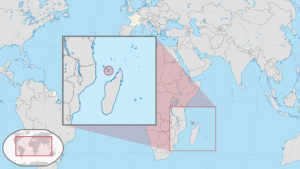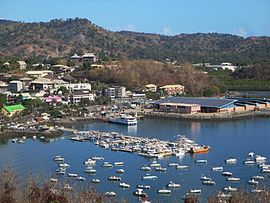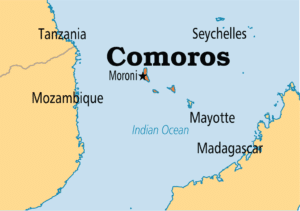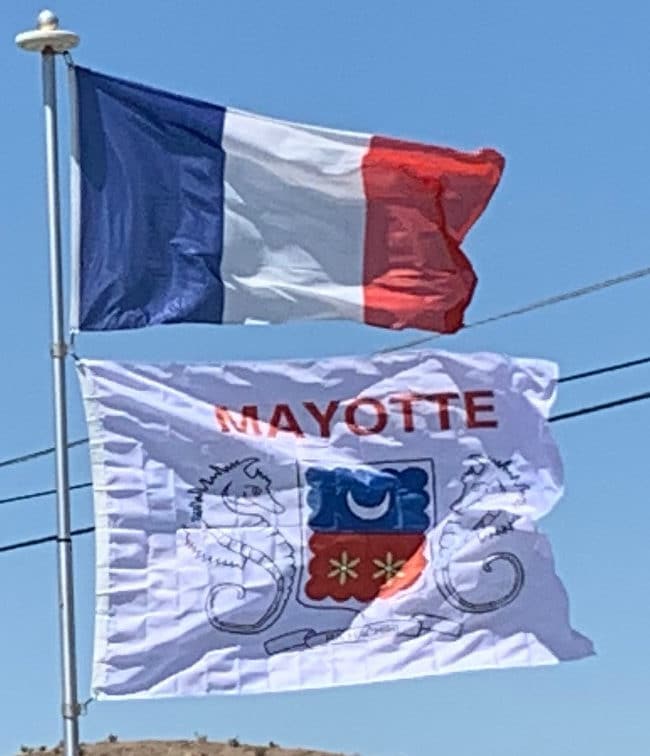Introduction:
Mayotte is an overseas department and region of France officially named the Department of Mayotte. It consists of a main island, Grande-Terre (or Maore), a smaller island, Petite-Terre (or Pamanzi), and several islets around these two. Mayotte is part of the Comoros archipelago, located in the northern Mozambique Channel in the Indian Ocean off the coast of Southeast Africa, between northwestern Madagascar and northeastern Mozambique. The department status of Mayotte is recent and the region remains, by a significant margin, the poorest in France. Mayotte is nevertheless much more prosperous than the other countries of the Mozambique Channel, making it a major destination for illegal immigration.

Mayotte’s land area is 374 square kilometres (144 sq mi) and, with its 279,471 people according to January 2020 official estimates, is very densely populated at 747 inhabitants per km2 (1,935 per sq mi). The biggest city and prefecture is Mamoudzou on Grande-Terre. However, the Dzaoudzi–Pamandzi International Airport is located on the neighboring island of Petite-Terre. The territory is also known as Maore, the native name of its main island, especially by advocates of its inclusion in the Union of the Comoros.

Although, as a department, Mayotte is now an integral part of France, the majority of the inhabitants do not speak French as a first language, but a majority of the people 14 years and older report in the census that they can speak French (with varying levels of fluency). The language of the majority is Shimaore, a Sabaki language closely related to the varieties in the neighboring Comoros islands. The second most widely spoken native language is Kibushi, a Malagasy language, of which there are two varieties, Kibushi Kisakalava, most closely related to the Sakalava dialect of Malagasy, and Kibushi Kiantalaotra. Both have been influenced by Shimaore. The vast majority of the population is Muslim.
The island was populated from neighbouring East Africa with later arrival of Arabs, who brought Islam. A sultanate was established in 1500. In the 19th century, Mayotte was conquered by Andriantsoly, former king of Iboina on Madagascar, and later by the neighboring islands Mohéli and then Anjouan before being purchased by France in 1841. The people of Mayotte voted to remain politically a part of France in the 1974 referendum on the independence of the Comoros. Mayotte became an overseas department on 31 March 2011 and became an outermost region of the European Union on 1 January 2014, following a 2009 referendum with an overwhelming result in favour of the department status.

The new department is facing enormous problems and challenges: in 2019, with an annual population growth of 3.8%, half the population is less than 17 years old, unemployment reaches 35% and 84% of the inhabitants live below the official poverty line. In addition, as a result of massive illegal immigration from neighboring islands, 48% of the population are foreign nationals.
History:
In 1500, the Maore sultanate was established on the island. In 1503, Mayotte was observed and named (firstly Espiritu Santu) by Portuguese explorers, but not colonized. The island has known several eras of wealth (especially during the 11th century at Acoua or between 9th and 12th centuries at Dembéni), being an important part of the Swahili coast culture. However, its sister island Anjouan was preferred by international traders due to its better suitability to large boats, and for a long time Mayotte remained poorly developed compared to the three other Comoros islands, and often was targeted by pirates and Malagasy or Comorian raids.
